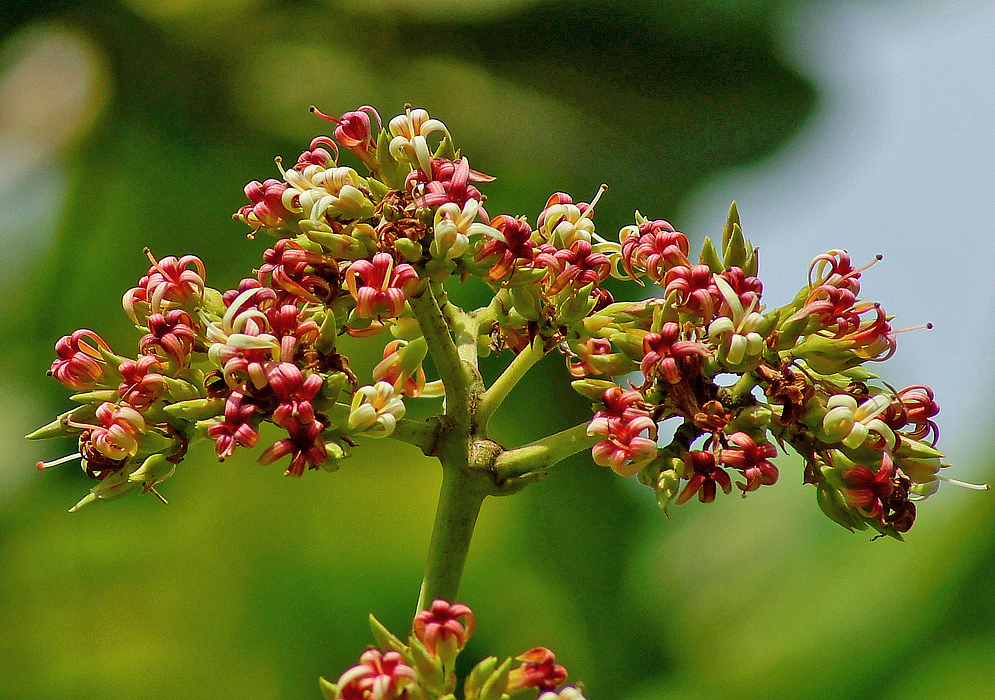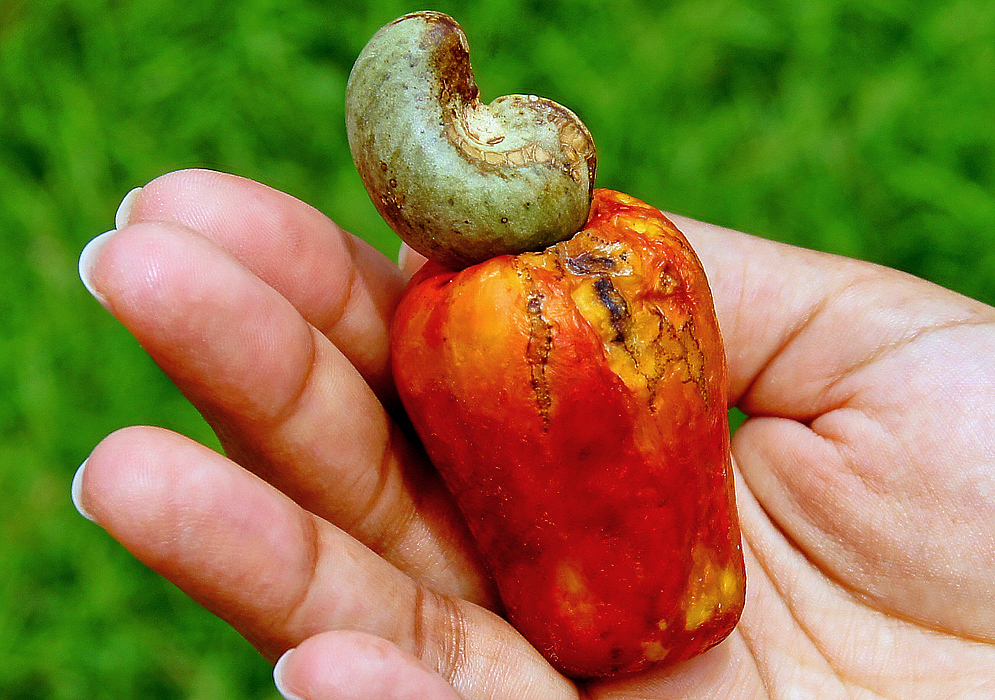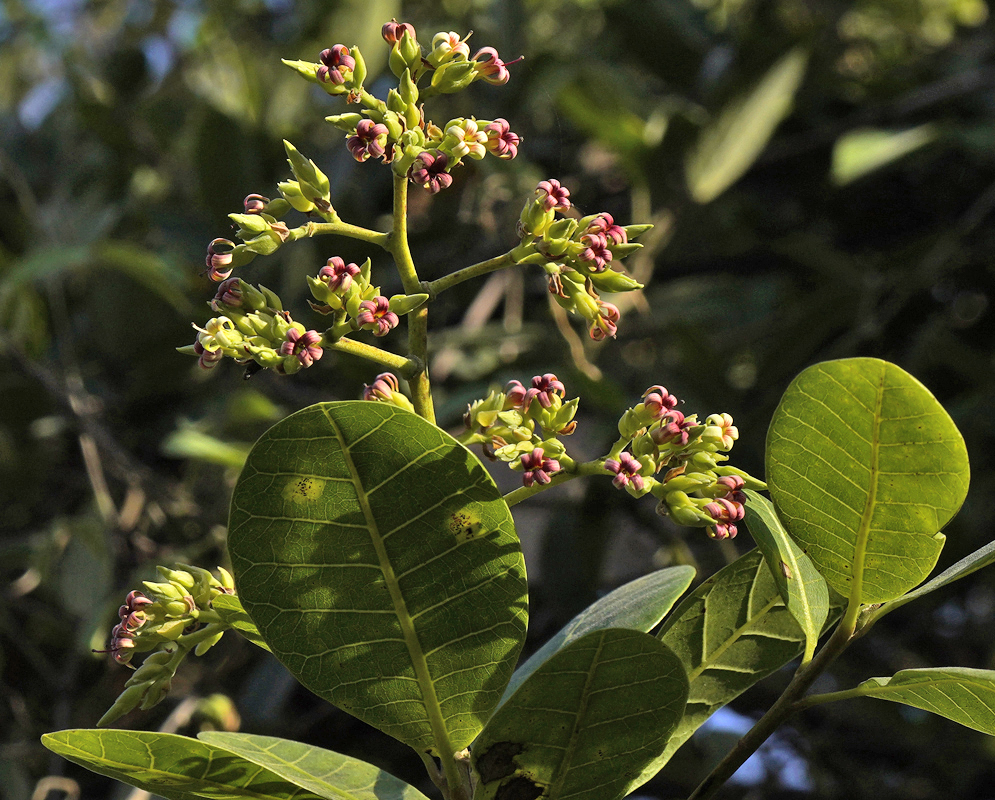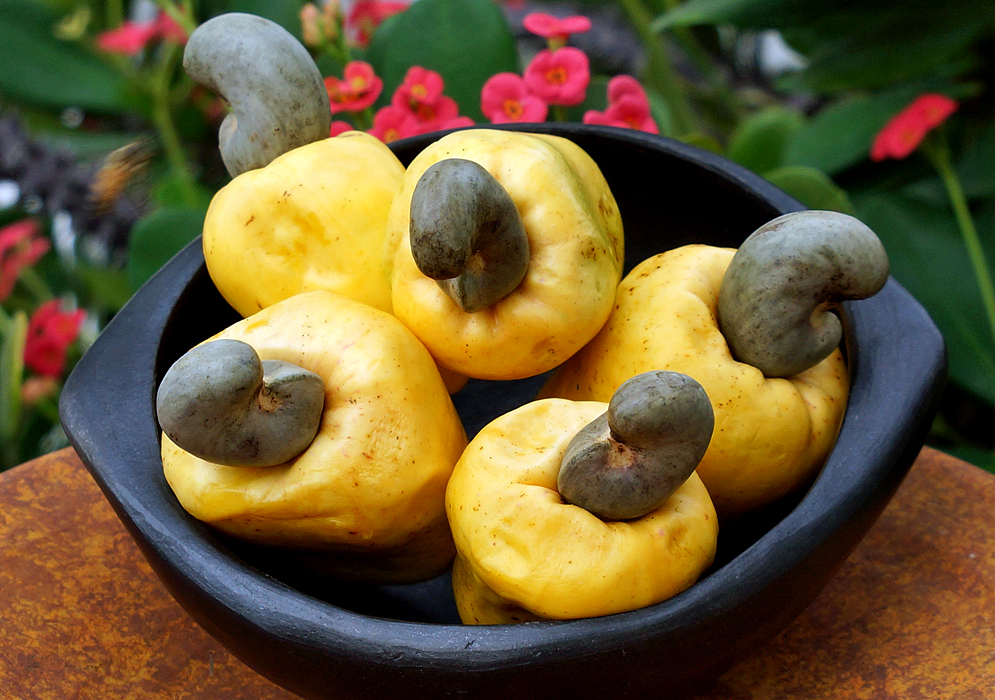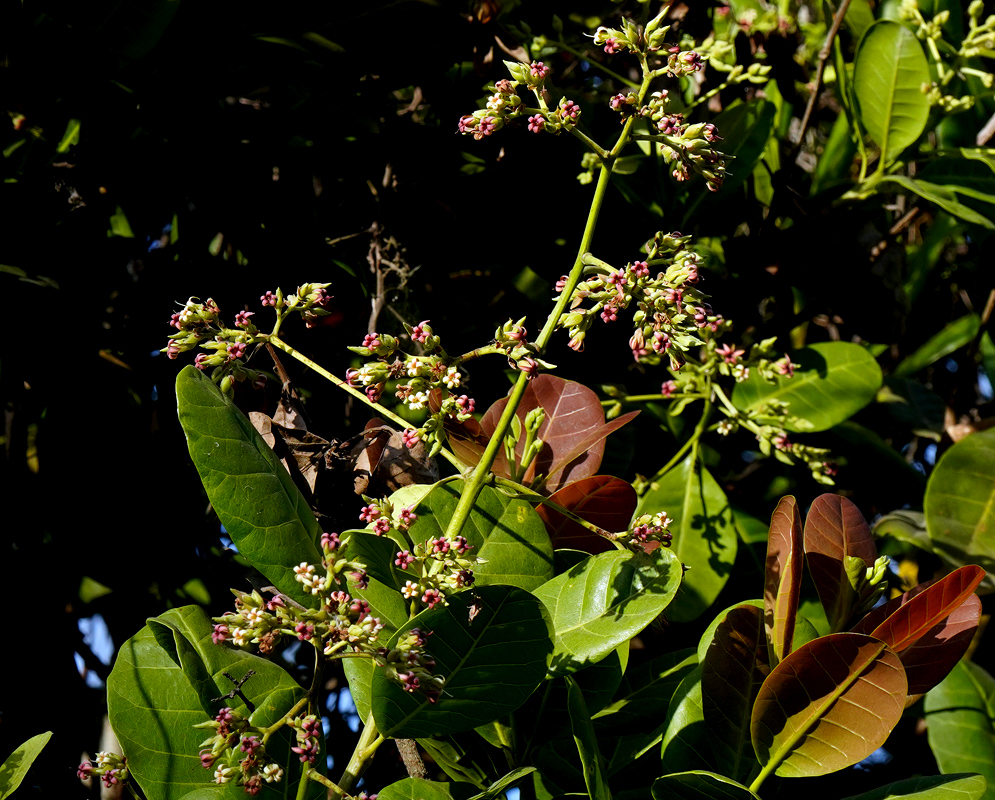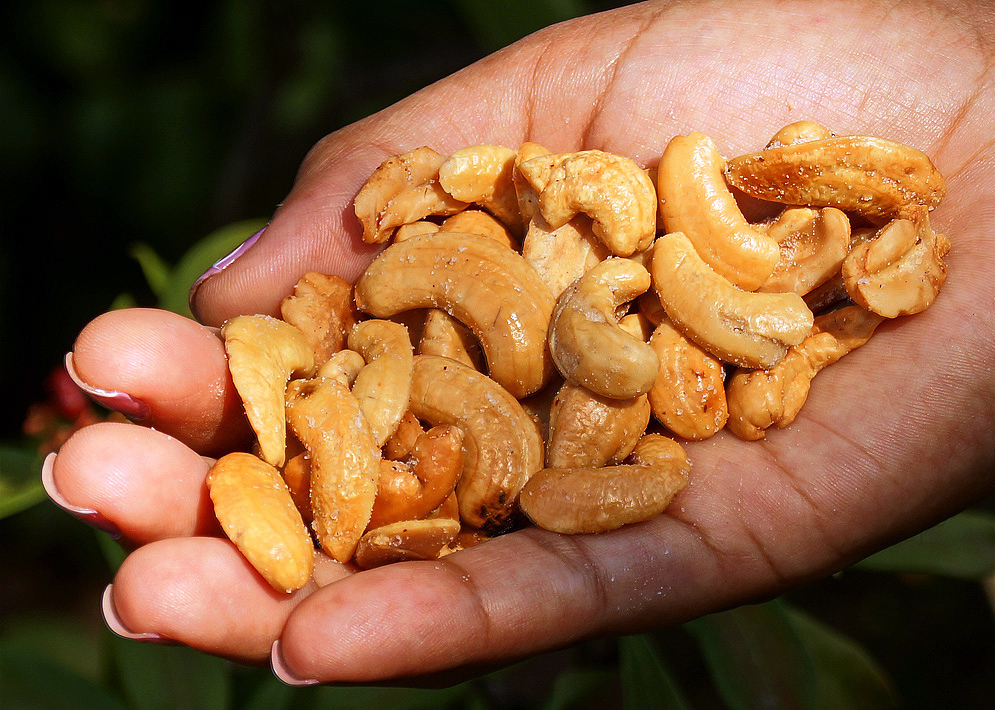This post has 11 Simple Fields-fields attached. Show fields.
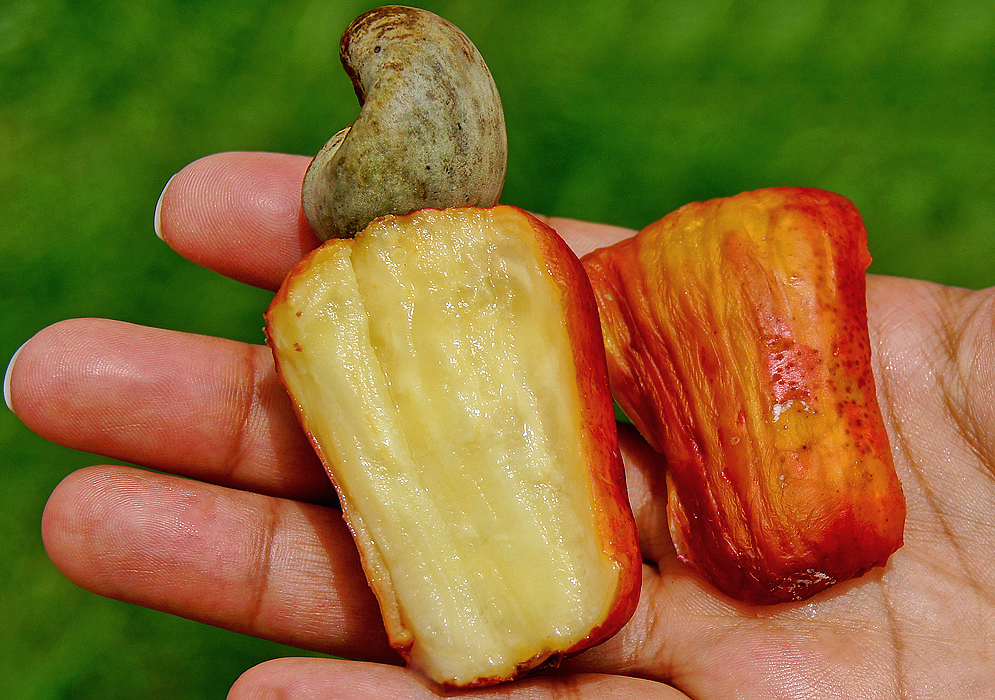
Native to northeastern Brazil. It is widely cultivated for its nuts and has become a valuable cash crop in various countries. Cashew tree is commercially cultivated in India, Vietnam, Nigeria, Brazil, and Ivory Coast. The tree requires a warm and humid climate with well-drained soil to thrive. It is often grown in large plantations to meet the global demand for cashew nuts. The cashew nut is technically the seed of the cashew apple and is not a nut but a drupe, a fleshy accessory fruit that develops from the flower stalk. The nuts (seeds) are enclosed in a hard shell that contains a caustic oil, which must be carefully processed before the nuts are safe for consumption. The highly perishable fruit below the cashew seed is edible and normally used for juice. The juice is astringent. Inside the shell is a caustic liquid that will burn you, so to get at the nut which can also be eaten fresh you need to be very careful to avoid the liquid. It has naturalized in Colombia with a habitat below 3,000 feet where it is called marañón and sold on the streets in bottled jars where a different roasting process makes the cashew darker and crunchier. Photographed in Panama and Colombia.
